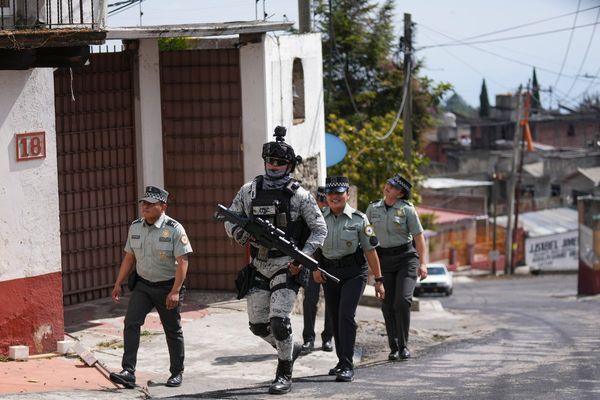CHICAGO — Illinois children’s hospitals are seeing a surge of kids with respiratory illnesses, leaving some hunting for beds.
“It’s skyrocketed since school started,” said Dr. John Cunningham, physician-in-chief at University of Chicago Medicine Comer Children’s Hospital, of the number of families seeking care at Comer. “This is the most challenging period we’ve experienced since March 2020.”
It’s not unusual for children’s hospitals to see surges of sick kids each winter, as illnesses such as the flu and RSV, respiratory syncytial virus, spread. But it’s rarer to get a big influx of children with respiratory illnesses in August and September, and, at some hospitals, it’s posing a particular challenge this year because of staffing shortages.
Many of the kids have enterovirus, which can be an upper respiratory or gastrointestinal infection, or rhinovirus, which is a type of enterovirus that affects the upper respiratory tract, Cunningham said. Most children who catch the illnesses don’t get very sick and recover at home, experiencing cold-like symptoms. But some, including children with asthma, can become short of breath and have low oxygen levels, requiring hospitalization.
Last week, a state health official sent a note to leaders of hospital groups in Illinois about the surge in hospitalizations among kids, saying, “Most (pediatric intensive care units) in our state are already at or near full capacity, making interfacility transfers more difficult.”
The official, Ashley Thoele, deputy chief operating officer at the state health department, said that more kids are being admitted to hospitals, and the situation is “further compounded by workforce shortages at some hospitals.”
Comer is now seeing about 50% more kids than usual coming through its emergency department each day — a spike that doesn’t usually happen until winter, Cunningham said. Many of the children admitted to Comer are staying for about two to four days, with a small number also needing treatment for infections and a very small number needing to be put on ventilators, he said.
Kids with asthma are at higher risk of experiencing shortness of breath and low oxygen when they get the illnesses, and the incidence of asthma among kids on the South Side, where Comer is located, is high.
Comer is also seeing an explosion in the number of requests from other hospitals to transfer sick children to Comer. Many community hospitals have closed their pediatric inpatient units in recent years, meaning they may try to transfer sick children elsewhere when they need hospitalization.
Last year at this time, Comer was getting about 63 requests a week from other hospitals to transfer children there, said Jeff Murphy, vice president of women’s, children’s, and emergency services at University of Chicago Medicine. Last week, it got 139. Over the last couple weeks, Comer has had to say no to about 20% of those requests, he said, because it already has so many patients.
Sometimes community hospitals say they have already tried four or five other hospitals before calling Comer, Murphy said.
“It’s not that they don’t want to take them,” Cunningham said. “We’re all coping with trying to find space for each of these children.”
In recent weeks, Advocate Children’s Hospital has had to transfer some intensive care unit patients to other hospitals, and, sometimes, it has taken those patients from other facilities, said Dr. Frank Belmonte, chief medical officer at Advocate Children’s Hospital, which has campuses in Park Ridge and Oak Lawn.
“We didn’t anticipate this,” Belmonte said. “This summer’s been a pretty typical summer and then all of sudden, in the last two weeks, tons of kids with respiratory illness are coming into the ER.”
Doctors aren’t totally sure what’s causing the spike. It’s possible many young kids are getting very ill now because they haven’t been exposed to the illnesses before because of isolation during COVID-19, or these may just be particularly nasty strains of the sicknesses, Cunningham said.
There’s a particular strain that’s been causing problems in even numbered years for the last decade or so, with the exception of 2020 because everyone was so isolated, Comer doctors say.
Chicago children’s hospitals also saw an unusually high number of kids last year around this time, but many of those cases were RSV, which hit earlier than usual last year.
This year, widespread staffing shortages have made it tough to find space, Belmonte said. Though hospitals may have enough physical beds for kids, if they don’t have enough nurses and other staff, they can’t necessarily fill all those beds. Staffing shortages are plaguing many industries, including health care, which saw many workers quit because of burnout from working through the pandemic.
“We’re all recruiting for nursing and techs and all the other pieces that keep the puzzle together,” Belmonte said. “In children’s hospitals, the skill set is so specific, so the labor pool is much smaller to pull from.”
Advocate has some nurses work across multiple departments and has been trying to be creative in its recruitment strategies, he said. Comer has been able to maintain full staffing, Murphy said, thanks to a recruitment initiative in November, as well as deciding to hire more nurses with associate’s degrees rather than just bachelor’s degrees, he said.
Cunningham said he expects to continue seeing children with the viruses through the fall and winter. Those cases may be on top of the kids who stream into the hospital for illnesses typically seen in the winter, such as RSV and the flu.
It may be a rough flu season this year. U.S. doctors typically look to Australia, which experiences its flu season earlier than the U.S., to see what the U.S. might expect. Australia had a bad flu season this year, and, on top of that, most people in the U.S. are no longer masking and taking the types of precautions that may have blunted other recent flu seasons.
That’s why it’s crucial kids be vaccinated against the flu and COVID-19 this year, Cunningham said.
“As many children as possible should be vaccinated against influenza,” Cunningham said. “That’s really very, very important this winter.”
____







